Though they are pretty foolproof plants, the most common problem gardeners have with their hydrangeas is failure to bloom. Need hydrangea help? Here are 5 common reasons for hydrangeas not flowering—and what to do about it!
5 Reasons Hydrangeas Don’t Bloom
Note: If you’re not sure what variety of hydrangea you have, reference our article with photos on hydrangea varieties.
1. Cold Injury
Many varieties of big-leaf hydrangea (H. macrophylla) and oakleaf hydrangea (H. quercifolia) form buds in late summer or fall. These tender buds can be killed by frigid winter temps or even a late spring cold snap.
- You can try to protect hydrangeas from winter damage by wrapping the plant with chicken wire or burlap and stuffing leaves or straw around the stems to insulate them, taking care not to snap any of the branches.
- Better yet, grow a variety that is cold hardy in your region or one that forms its buds on the current season’s growth. Panicle hydrangeas (H. paniculata) often called PeeGees, and smooth hydrangeas (H. arborescens) are the most cold hardy species and both blossom on new wood.
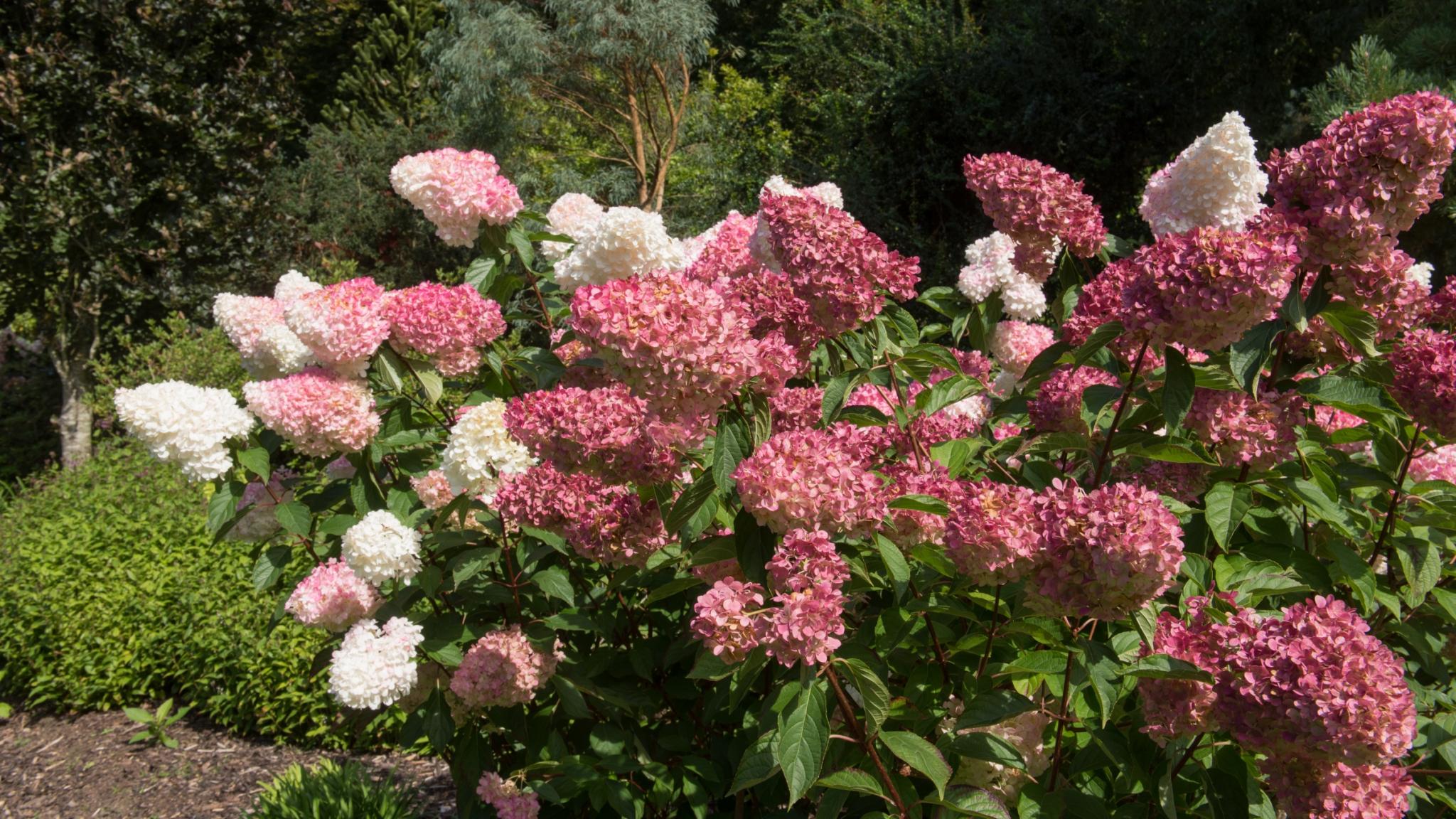
Image: Panicle hydrangeas are more cold-hardy. Credit: Peter Turner/Shutterstock.
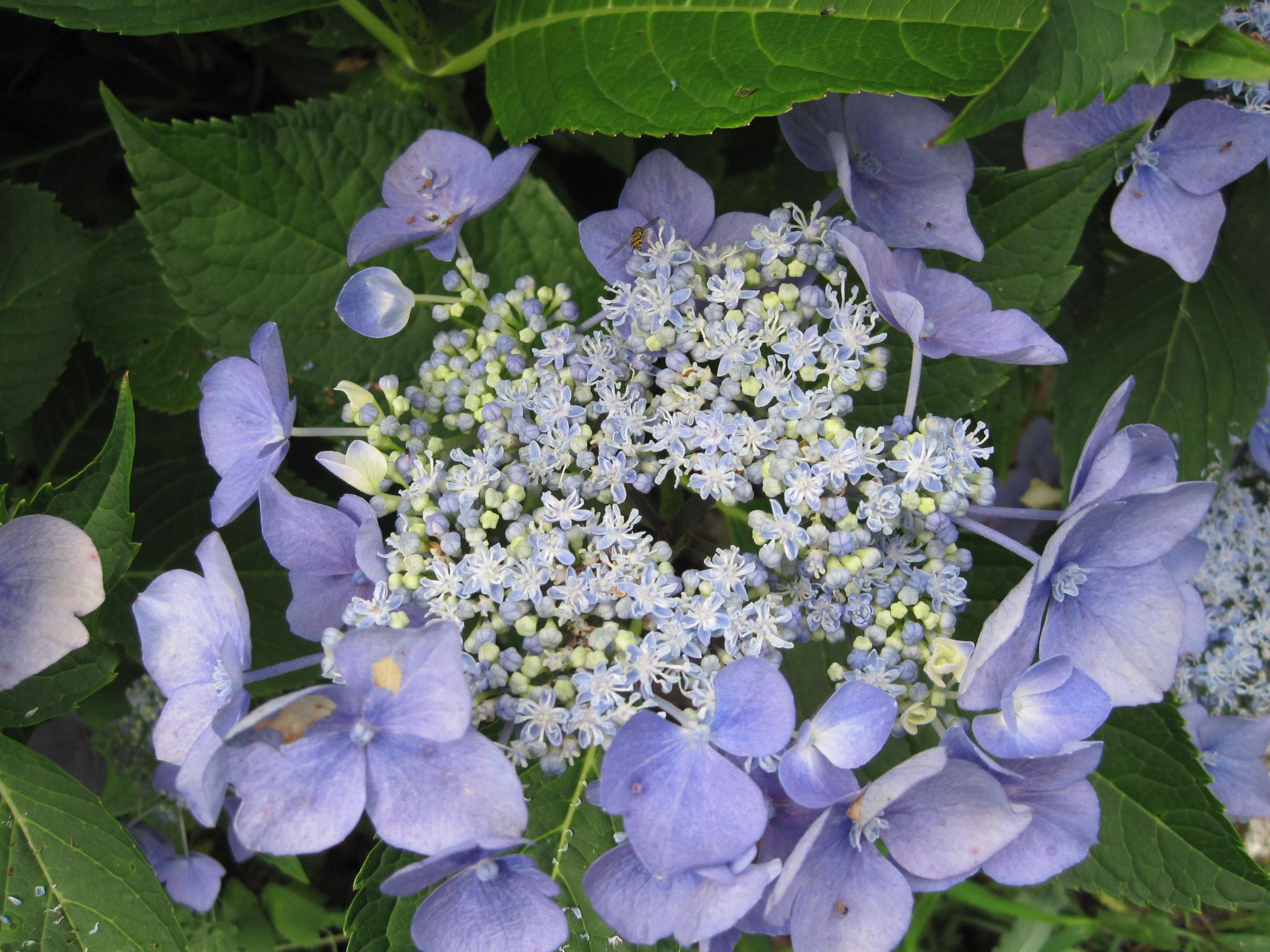
Lace cap hydrangea flowers are made up of both fertile (the small center ones) and infertile (the large outer ones) blossoms.
2. Improper Pruning
The time of year you prune makes a big difference. Knowing what type of hydrangea you have! This will lessen the chance of cutting off your flower buds.
- Panicle hydrangeas and smooth hydrangeas form their buds on the current season’s growth so they can be pruned in the late winter or early spring before spring growth without sacrificing any future flowers.
- However, the other hydrangea varieties (showy big-leaf types including mopheads and many lace-cap varieties as well as oakleaf varieties) form their buds in the previous year. You can safely remove dead canes but if you feel the need to prune them further, wait until AFTER they have blossomed in the summer. If you prune in fall, winter, or early spring, that means no flowers this year.
Find a chart on when to prune hydrangeas with more information on pruning.
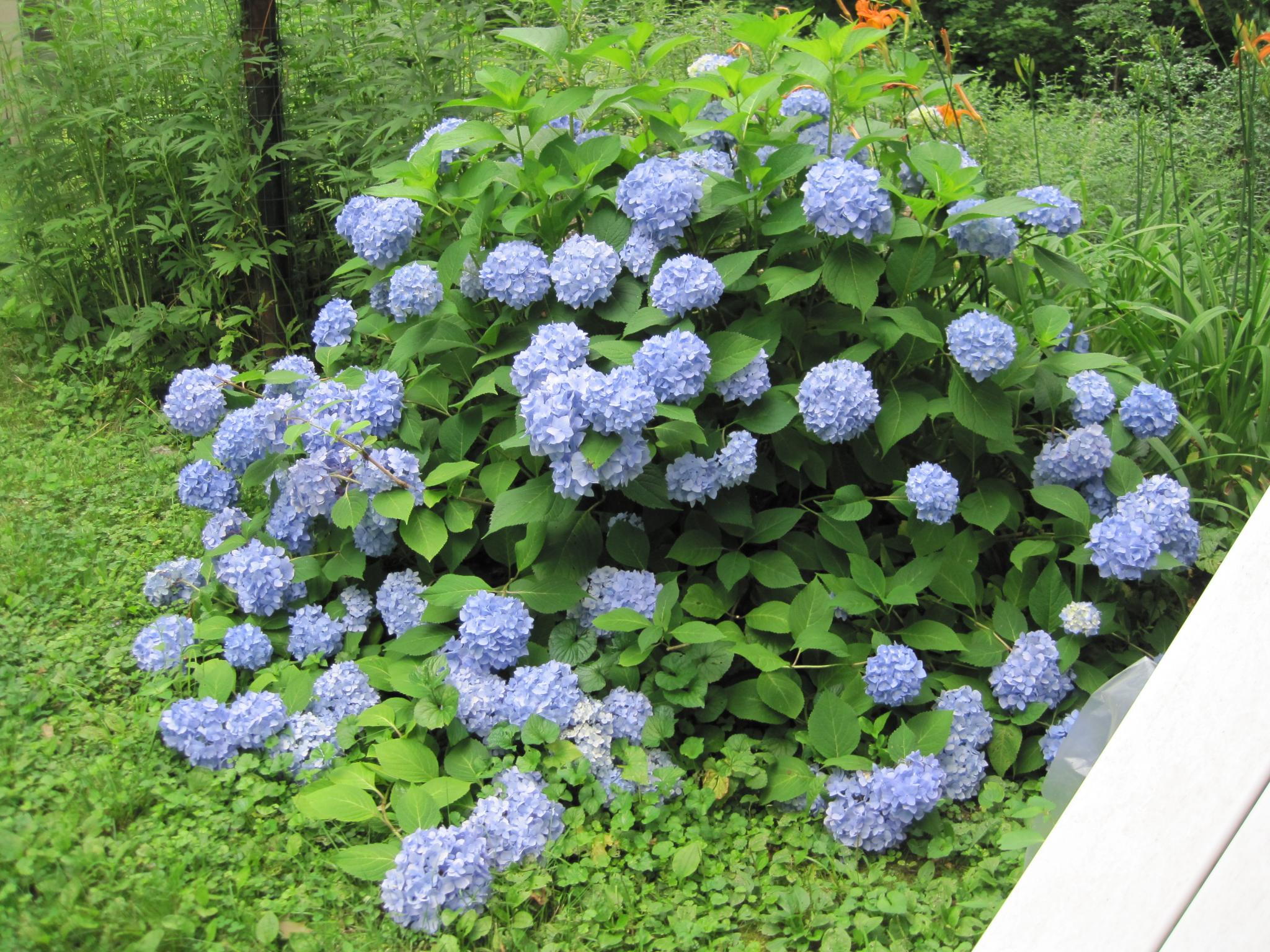
‘Endless Summer’ is a macrophylla hybrid. Prune right after flowering by cutting back the flowering shoots to the next bud.
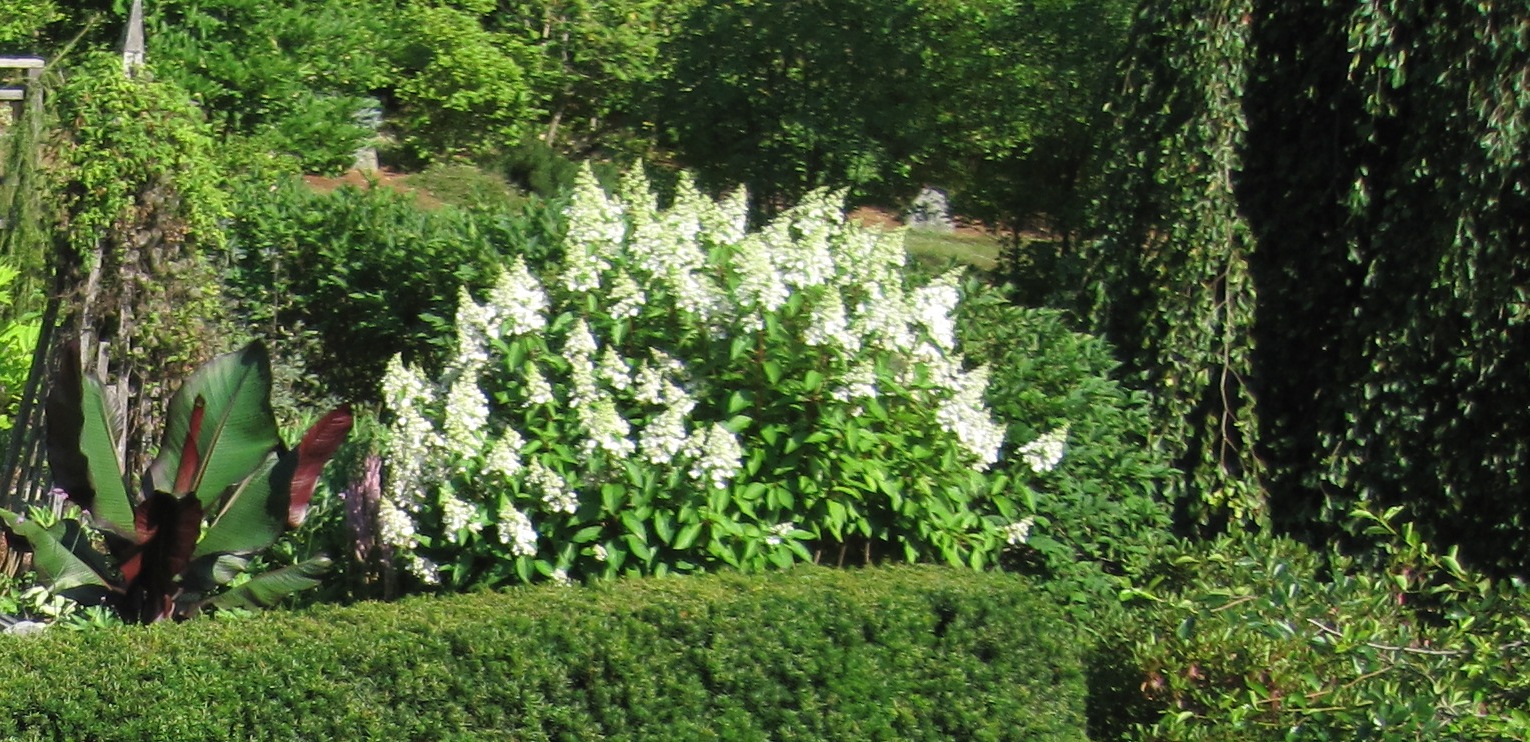
Upright blossoms on this panicle hydrangea make a stunning statement in a green garden. This type of hydrangea is pruned in late winter, before spring growth.
3. Not Enough Sun
Though hydrangeas are touted as being great shade plants, but we’re talking about part shade. (See shade definitions.)
- To flower well, these shrubs need 3 to 4 hours of direct sun each day.
- They grow best with morning sun and afternoon shade, especially in hot southern gardens. They can take more sun in cool northern areas, especially if the soil is moist.
- Oakleaf hydrangeas do better than the others in shady places.
- When you first planted your hydrangea it might have been the perfect location but after a few years the surrounding trees and shrubs may have grown enough to cast more shade on it. Try pruning the plants around them to let in more light or, if your hydrangea isn’t too big to handle, move it to a sunnier spot.

Oakleaf Hydrangeas are the best choice for part shade. Credit: Gerry Bishop/Shutterstock.
4. Too Much Nitrogen
If grown in good soil with a high amount of organic matter your hydrangeas don’t really need extra fertilizer. Adding too much nitrogen will promote lush green growth at the expense of flowering.
If you have poor soil and feel it is necessary to add fertilizer look for one low in nitrogen and high in phosphorus—sometimes called a bloom booster.
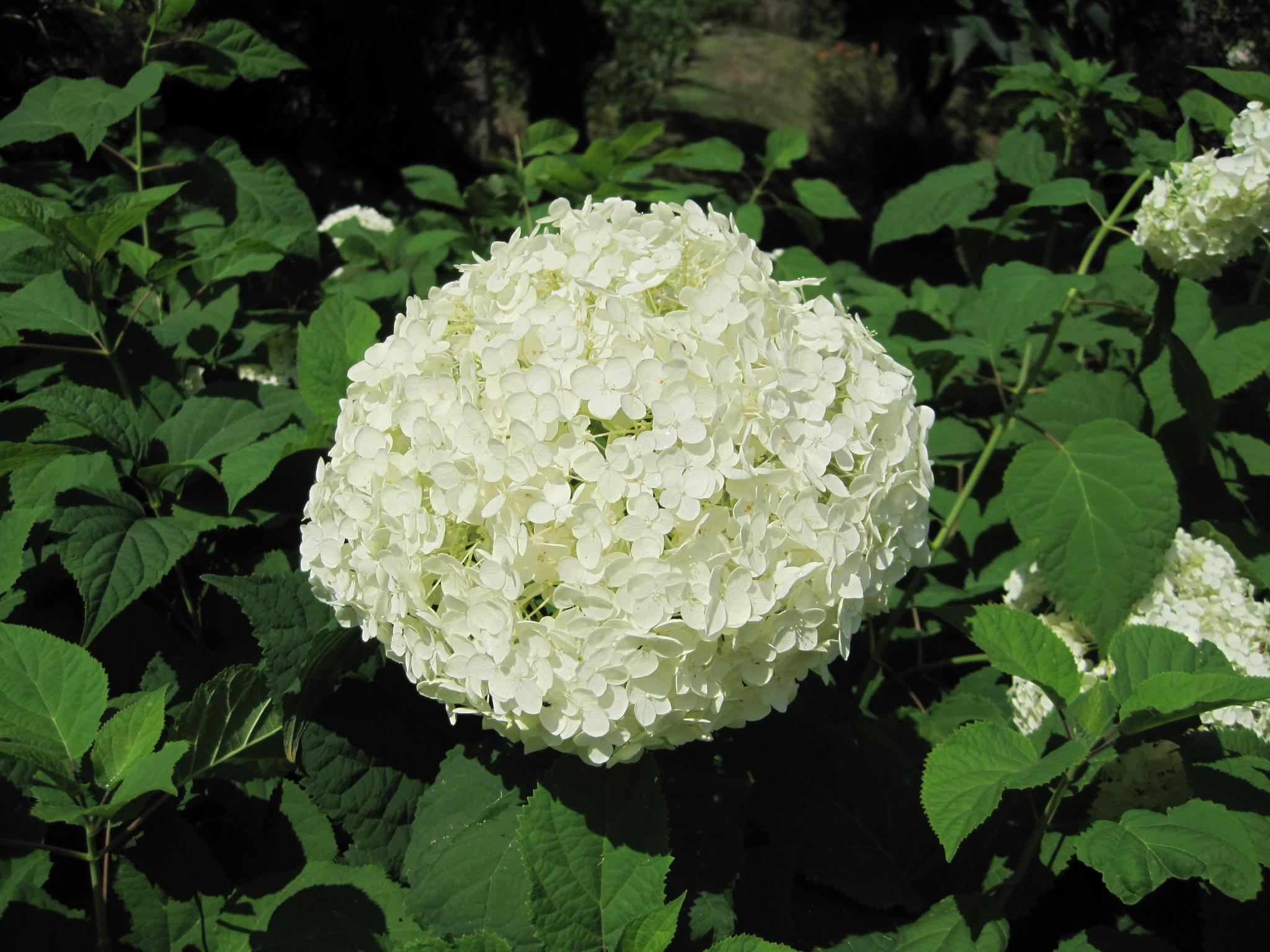
‘Annabelle’ is a popular smooth hydrangea that will flower midsummer.
5. Lack of Water
The “hydra” in the word “hydrangea” should tell you that these flowers need to be well-hydrated to flower.
- If your hydrangea is wilting in the sunlight or is drought-stressed, it is not going to blossom well, if at all.
- Hydrangeas like consistently moist but well-drained soil, not waterlogged.
- A layer of mulch can help keep the soil around their roots evenly moist.
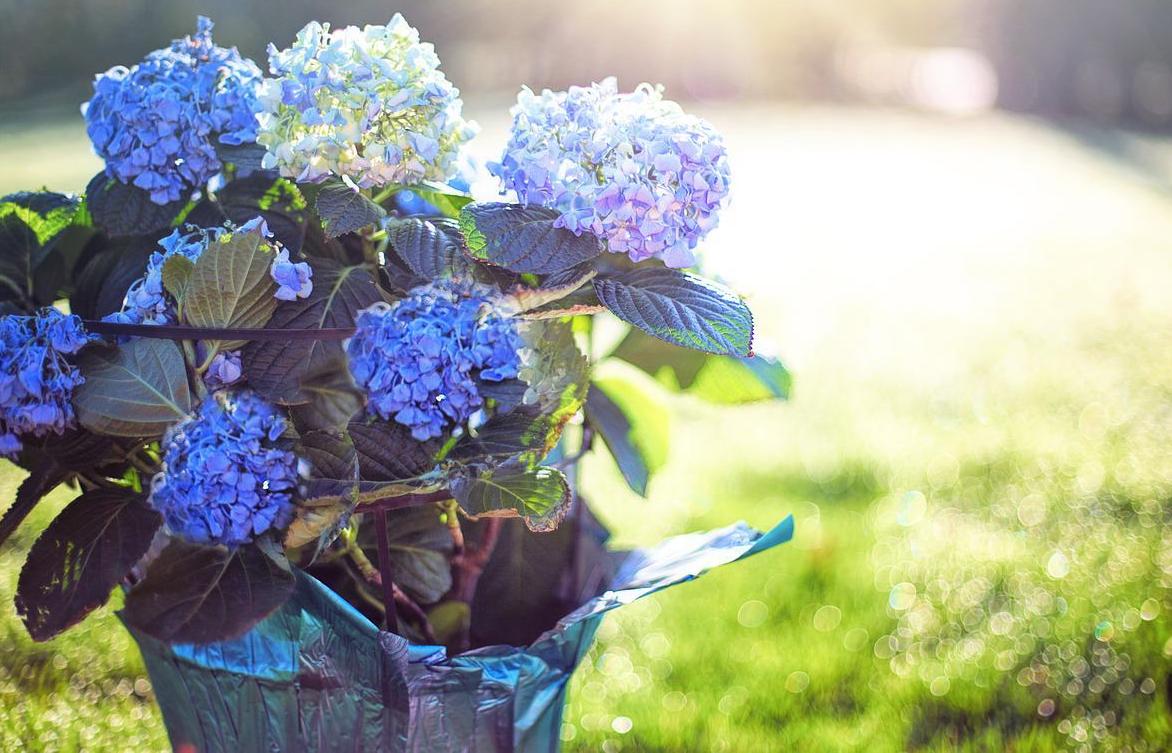
A Word on Potted “Gift” Hydrangeas
If you were given a potted hydrangea as a gift, it’s usually not meant to grow in the ground. It’s a gift to enjoy as long as you can.
- If want to try growing it outside, be aware that it might not be hardy in your region.
- Since it was grown in a greenhouse and forced into bloom at an unnatural time, it may take years for it to recover and grow, if it survives at all.
It is worth a try but don’t expect it to blossom as copiously as it did in its foil-covered pot. It was grown for that one-time show at the expense of the long-term health of the plant.
All hydrangeas are not the same. Knowing what hydrangeas you already have or taking the time to research appropriate ones to add to your garden will go a long way toward ensuring your success with these classic garden plants.
See the Growing Guide to Hydrangeas for more information on how to plant and care for hydrangeas.
Comments